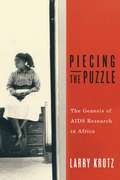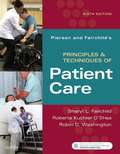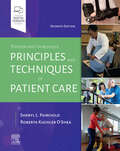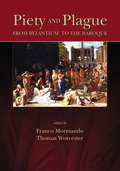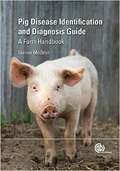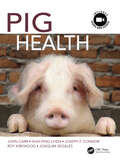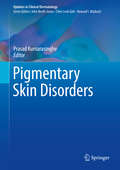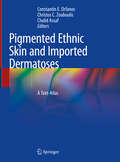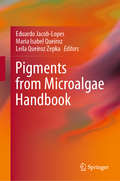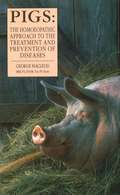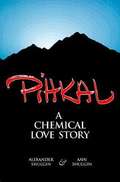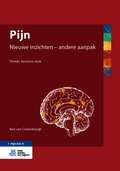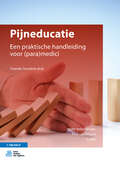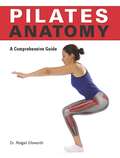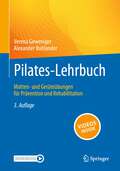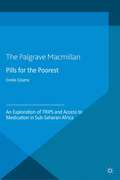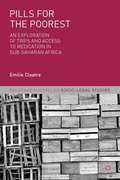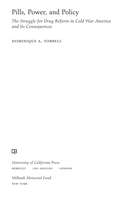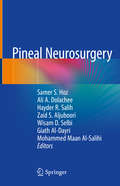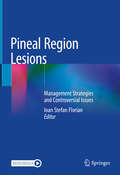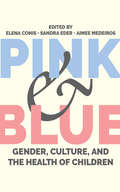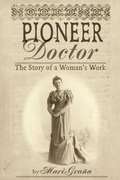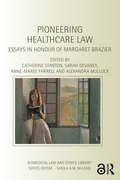- Table View
- List View
Piecing the Puzzle: The Genesis of AIDS Research in Africa
by Larry KrotzIn 1979, Dr. Allan Ronald, a specialist in infectious diseases from Canada, and Dr. Herbert Nsanze, head of medical microbiology at University of Nairobi, met through the World Health Organization. Ronald had just completed a successful project that cured a chancroid (genital ulcer) epidemic in Winnipeg and Nsanze asked him to come to Kenya to help with Kenya’s “sexual diseases problem.” That initial invitation led to a groundbreaking international scientific collaboration that would uncover critical pieces in the complex puzzle that became today’s HIV/AIDS pandemic. In Piecing the Puzzle, journalist and documentary filmmaker Larry Krotz chronicles the fascinating history of the pioneering Kenyan, Canadian, Belgian, and American research team that uncovered HIV/AIDS in Kenya, their scientific breakthroughs and setbacks, and their exceptional thirty-year relationship that began a new era of global health collaboration.
Pierson and Fairchild's Principles & Techniques of Patient Care
by Sheryl L. Fairchild; Roberta Kuchler O'Shea; Robin D. WashingtonThis new edition has been thoroughly updated to reflect the most current accepted patient care standards, principles, and techniques. Plus, additional video clips and expanded learning resources will help ensure you have a solid mastery of patient care in the rehabilitation setting.
Pierson and Fairchild’s Principles and Techniques of Patient Care
by Sheryl L. Fairchild Roberta Kuchler O’SheaBefore you can master your role in physical therapy, you must first master the basics of patient care! Pierson and Fairchild's Principles & Techniques of Patient Care, 7th Edition provides a solid foundation in the knowledge and skills needed for effective patient care. Clear, step-by-step instructions show how to safely perform common procedures and tasks such as assessment of vital signs, positioning and draping, range of motion exercises, and patient transfer activities. Rationales make it easy to understand why specific techniques are used.
Piety and Plague: From Byzantium to the Baroque (Sixteenth Century Essays & Studies #78)
by Thomas Worcester Franco MormandoPlague was one of the enduring facts of everyday life on the European continent, from earliest antiquity through the first decades of the eighteenth century. It represents one of the most important influences on the development of Europe’s society and culture. In order to understand the changing circumstances of the political, economic, ecclesiastical, artistic, and social history of that continent, it is important to understand epidemic disease and society’s response to it.To date, the largest portion of scholarship about plague has focused on its political, economic, demographic, and medical aspects. This interdisciplinary volume offers greater coverage of the religious and the psychological dimensions of plague and of European society’s response to it through many centuries and over a wide geographical terrain, including Byzantium. This research draws extensively upon a wealth of primary sources, both printed and painted, and includes ample bibliographical reference to the most important secondary sources, providing much new insight into how generations of Europeans responded to this dread disease.
Piety and Plague: From Byzantium to the Baroque (Sixteenth Century Essays & Studies #78)
by Thomas Worcester Franco MormandoPlague was one of the enduring facts of everyday life on the European continent, from earliest antiquity through the first decades of the eighteenth century. It represents one of the most important influences on the development of Europe’s society and culture. In order to understand the changing circumstances of the political, economic, ecclesiastical, artistic, and social history of that continent, it is important to understand epidemic disease and society’s response to it.To date, the largest portion of scholarship about plague has focused on its political, economic, demographic, and medical aspects. This interdisciplinary volume offers greater coverage of the religious and the psychological dimensions of plague and of European society’s response to it through many centuries and over a wide geographical terrain, including Byzantium. This research draws extensively upon a wealth of primary sources, both printed and painted, and includes ample bibliographical reference to the most important secondary sources, providing much new insight into how generations of Europeans responded to this dread disease.
Pig Disease Identification and Diagnosis Guide
by Steven McoristPork is one of the world's most widely consumed meats, with the pig industry undergoing recent rapid expansion across Asia and Latin America. This textbook covers more than 100 of the most common pig diseases. With each presented as a case study, the book uses a question and answer format to enable students to recognise the key features of each disease, identify the problem and suggest a course of action. Fully illustrated throughout with colour photos, this is an invaluable learning tool for veterinary, animal science and agricultural students, as well as a useful resource for veterinarians.
Pig Health: Advice On Management, Training And Health Care
by John Carr Shih-Ping Chen Joseph F. Connor Roy Kirkwood Joaquim SegalésMaintaining the health of pigs is vital in pig farming and production. This new book written by experts from around the world focuses on the health of pigs, first with coverage of the disorders of pigs organised by clinical sign and body system. The book explores environmental medicine and then health maintenance. Treatment options are discussed, emphasizing a reduction in antimicrobial use and an increased awareness of a holistic approach to treatment. The book includes over 1,500 high-quality illustrations to enhance the clinical description, as well as a wealth of high-quality videos to test the reader in making differential diagnoses with treatment options. Quizzes at the end of each section also encourage reflective learning.International experts from the UK, USA, Australia, Spain and Taiwan cover clinical examination of the individual pig and groups along with environmental medicine, making this the ideal reference for veterinary practitioners and students. Those interested in population medicine (poultry, aquaculture, cattle and small ruminant and apiaries) will particularly enjoy the holistic approach to veterinary medicine. All those who appreciate the many talents of pigs will enjoy the practical approach to managing the health of their animals.This book moves veterinary science forward, promoting health rather than treating disease. It will be your number one reference for keeping your pigs healthy.
Pigmentary Skin Disorders (Updates in Clinical Dermatology)
by Prasad KumarasingheDiagnosis and management of pigmentary skin disorders has become an important area in dermatology as the demand for treatment of these conditions has increased exponentially, particularly with skin of color. However, coverage in standard texts regarding various pigmentary disorders is insufficient and the need for focused attention on new developments and latest research findings is growing. Pigmentary Skin Disorders is written and edited by international leaders in the field and chapters include a clinician’s approach to categorizing pigmentary disorders, post-inflammatory hyperpigmentation, lasers in pigmentary disorders, and drug-induced pigmentation. This volume is part of Springer's Updates in Clinical Dermatology series which aims to promote the rapid and efficient transfer of medical research into clinical practice. Covering new developments and innovations in all fields of clinical dermatology, it provides the clinician with a review and summary of recent research and its implications for clinical practice. Each volume is focused on a clinically relevant topic and explains how research results impact diagnostics, treatment options and procedures, as well as patient management. The reader-friendly volumes are highly structured with core messages, summaries, tables, diagrams and illustrations and are written by internationally well-known experts in the field.
Pigmented Ethnic Skin and Imported Dermatoses: A Text-atlas
by Christos C. Zouboulis Constantin E. Orfanos Chalid AssafThe vast majority of the global population has pigmented non-Caucasian skin; accordingly, this book focuses on the diagnosis and management of skin diseases in dark-skinned populations, paying particular attention to different reactive profiles, the frequency and the clinical pictures of diseases in pigmented ethnic skin that arise in hot climate zones. Supplemented by a wealth of high-quality, full-color images, this comprehensive work covers the full range of dermatological entities and issues characteristic of the tropical and subtropical regions of the globe, including those that are now emerging in developed countries as a result of intensified travel, globalized business, and migration. Each disorder is described by respected experts on subtropical and tropical countries, and each chapter is clearly structured, examining the incidence, pathogenesis, clinical presentation, management and course.The book illustrates the clinical features and includes major schedules for the diagnosis and management of skin diseases presented in darkly pigmented to black skin. As such, it offers an invaluable tool for all dermatologists in developing and developed countries, especially those who are used to dealing with skin lesions mainly in white Caucasian skin. While enabling physicians to provide proper advice, medical services and support, Pigmented Ethnic Skin and Imported Dermatoses also represents a guide for a broader range of professionals working for governmental institutions, health and refugee agencies.
Pigments from Microalgae Handbook
by Eduardo Jacob-Lopes Leila Queiroz Zepka Maria Isabel QueirozThe Pigments from Microalgae Handbook presents the current state of knowledge on pigment production using microalgae-based processes, and covers both the scientific fundamentals of this technology and its practical applications. It addresses biology, chemistry, biochemistry, analysis and engineering aspects, as well as applications of natural pigments in photosynthetic organisms. The book also describes the analytical procedures associated with the characterization of pigments and the engineering aspects of microalgal pigment production. It considers the three major classes of pigments(chlorophylls, carotenoids and phycobiliproteins) produced and surveys the main commercial applications of these chemicals.The book offers a valuable source of information for industrial researchers and practitioners in industrial biotechnology, as it covers various engineering aspects of microalgal pigment production, such as bioreactors and bioprocesses, industrial extraction processes, and the bioeconomy of production including life-cycle assessment. The book will also be of interest to undergraduate and graduate students of biochemistry, food chemistry, and industrial microbiology.
Pigs: The Homoeopathic Approach to the Treatment and Prevention of Diseases
by George MacleodWritten in response to a growing demand on the part of pig farmers, here is a text-book which will provide a working manual to which reference can be readily made.Not all the diseases discussed in the text are of interest to pig producers in the United Kingdom but they have been included in the hope that they may be of interest to pig farmers in other countries. Also some of the diseases discussed are subject to the restrictions under the Diseases of Animals Acts and Orders, but they have been included in the hope that owners may recognise the cardinal symptoms of these diseases and take action accordingly.
Pihkal: A Chemical Love Story
by David E. Nichols Alexander Shulgin Ann ShulginThis book contains two parts. The first part is a personal story of exploration by the renowned chemist Alexander Shulgan. The second part is even more interesting - it is a summery of years and years of psychadelic research on phenthalamines. Each chemical contains information on it's synthesis, dosage, effects, and commentary. Shulgan explored the known phenthalamines, then produced HUNDREDS of completely new chemicals and analogs in his quest to explore a class of chemicals that ranges from mescaline to MDMA (ecstacy).
Pijn: Nieuwe inzichten – andere aanpak
by Ben van CranenburghDit boek maakt deel uit van de zesdelige serie ‘Toegepaste neurowetenschappen’. Inzichten over pijn zijn de laatste vijftig jaren herhaaldelijk ingrijpend gewijzigd. Pijn, nieuwe inzichten – andere aanpak biedt het pijn-gedachtegoed zoals dat nu geformuleerd kan worden op basis van vele wetenschappelijke onderzoekingen. Pijn is lang niet altijd een direct gevolg van weefselschade, maar is een uiterst variabele en flexibele gewaarwording die meestal van veel factoren tegelijk afhangt. In het boek komt pijn vanuit vijf verschillende perspectieven aan de orde:1. Het denken over pijn: wat is pijn? Reflecties over de zin van pijn, de vele dimensies van pijn, de oorsprong van pijn.2. Neurowetenschappen. De rol van het perifere en centrale zenuwstelsel: de hersengebieden die bij pijn betrokken zijn, de rol van pijnmodulerende systemen en plasticiteit.3. Psychologie. De huidige praktijk gaat nog vaak uit van een dualistische filosofie: als er geen somatische oorzaak gevonden wordt, is het psychisch. Dit boek rekent af met dit ‘simplistisch dualisme’ en biedt andere, meer genuanceerde denkmodellen.4. Pijnsyndromen: viscerogene pijn en diverse neurogene pijnsyndromen (o.a. CRPS en fantoompijn) worden besproken. Nieuwe verklaringsmodellen voor chronische pijn worden gepresenteerd: neurale reorganisatie en sensitisatie.5. Evaluatie en behandeling. Wat is een goede pijnanalyse? Hoe kan pijn in kaart worden gebracht? Welke overwegingen leiden tot de keuze van een interventie? Nieuwe verklaringsmodellen voor pijn openen nieuwe, vooral niet-farmacologische wegen voor behandeling.Het boek bevat geen kant-en-klare recepten voor pijnbestrijding, maar stelt primair het denken over pijn aan de orde, vanuit de overtuiging dat in de klinische praktijk het denken steeds aan het handelen vooraf dient te gaan.Pijn, nieuwe inzichten – andere aanpak kan een nuttige functie hebben in diverse opleidingen (medisch, paramedisch, psychologie). Dit boek kan ook worden gebruikt als gemeenschappelijk startpunt bij het vormen van een interdisciplinair pijnteam. Vooral dan is een zekere consensus wat betreft uitgangspunten en visie over pijn van belang.De complete tekst met figuren is ook online als e-book beschikbaar met extra bijlagen, zoals de Pijnvragenlijst en ook diverse casuïstiek ter beoordeling. Bij elk hoofdstuk zijn bovendien oefenvragen, samenvattingen en een uitgebreide literatuurlijst te vinden.
Pijn: Vanuit een neurowetenschappelijk perspectief
by Ben CranenburghDit boek bevat geen kant-en-klare recepten voor pijnbestrijding, maar stelt primair het denken over pijn aan de orde, vanuit de overtuiging dat in de klinische praktijk het denken steeds aan het handelen vooraf dient te gaan. Pijn, vanuit een neurowetenschappelijk perspectief is het derde deel van de vierdelige serie ´Toegepaste neurowetenschappen´. Inzichten over pijn zijn de laatste vijftig jaren herhaaldelijk ingrijpend gewijzigd. Pijn is lang niet altijd een direct gevolg van weefselschade, maar is een uiterst variabele en flexibele gewaarwording die meestal van veel factoren tegelijk afhangt. Het vaak impliciete uitgangspunt ´pijn is vervelend en moet dus bestreden worden´ is achterhaald. In plaats daarvan komt een zorgvuldige analyse van de zin van pijn. Pijn kan een signaal zijn voor onraad in de ruimste zin van het woord, maar pijn kan ook een doel hebben: het dwingt een zinvolle gedragsverandering af. Het domweg bestrijden van pijn kan daarom riskant zijn. Filosofische, psychologische, fysiologische en neurologische benaderingen sluiten vaak goed op elkaar aan. De neurowetenschappen zorgen voor de stevige brug tussen deze invalshoeken. In het boek komt pijn in vijf te onderscheiden gedeelten aan de orde. 1 Concepten over pijn: reflecties over de zin van pijn, de vele dimensies van pijn, de oorsprong van pijn. 2 Neurowetenschappen. De rol van het perifere (pijnvezels) en het centrale zenuwstelsel (pijn in het brein) komen uitvoerig aan de orde. Belangrijke nieuwe ontwikkelingen hebben plaatsgevonden betreffende de hersengebieden die bij pijn betrokken zijn, plastische veranderingen en de rol van pijnmodulerende systemen. 3 Psychologie. In de praktijk wordt ook nu nog vaak ervan uitgegaan dat chronische pijn een somatische of psychische oorzaak heeft: het 'dualistische simplisme'. Dit boek tracht een nuancering aan te brengen door verschillende psychologische denkmodellen te presenteren: de psychofysiologische, de operante en de cognitieve verklaringswijzen voor pijn. 4 Pijnsyndromen: viscerogene pijn, diverse neurogene pijnsyndromen (o.a. CRPS en fantoompijn). Nieuwe verklaringsmodellen voor chronische pijn worden gepresenteerd: neurale reorganisatie en sensitisatie. 5 Evaluatie en behandeling. Hoe kan pijn in kaart worden gebracht en wat kan de betekenis hiervan zijn voor de praktijk? Argumenten op grond waarvan een placebo- en nocebo-effecten wordt benadrukt. Speciale aandacht wordt gegeven aan neuromodulatietherapieën: pijnbehandeling door prikkeling zoals acupunctuur, vibratie, muziek en TENS. Afsluitend worden enkele adviezen gegeven voor een pijnanalyse in de praktijk volgens de 'empirische cyclus': het 'denken over pijn' wordt verwerkt in het klinisch handelen.Het boek kan een nuttige functie hebben in diverse opleidingen (medisch, paramedisch, psychologie). Het kan ook worden gebruikt als gemeenschappelijk startpunt bij het vormen van een interdisciplinair pijnteam. Vooral dan is een zekere consensus wat betreft uitgangspunten en visie over pijn van belang.
Pijneducatie: Een praktische handleiding voor (para)medici
by Jo Nijs Paul Van WilgenDit boek is een praktische handleiding bij het geven van pijneducatie. Het is een wetenschappelijk onderbouwde interventie die bijdraagt aan een succesvolle behandeling van patiënten met chronische pijn.Ongeveer twintig procent van de volwassenen woonachtig in westerse landen heeft chronische pijn. Pijn ontstaat door activering van een menselijk (brein) netwerk met activering van verschillende hersendelen. Lang is gedacht dat pijn wordt bepaald door de mate van schade aan aan lichaamsweefsels. Dit is echter niet het geval. Veel mensen hebben pijn waar geen schade meer is. Hoog tijd om patiënten uit te leggen wat pijn is en wat de waarde is van kennis over pijn om uit de cirkel te komen van negatieve (ziekmakende) gedachten over het lichaam en toegenomen angst.Het boek bevat informatie over de neurofysiologie van acute en chronische pijn (centrale sensitisatie) en het toepassen van pijneducatie. Deze tweede druk is volledig herzien in de theorie, de diagnostiek en bevat vier nieuwe hoofdstukken over het toepassen van pijneducatie bij specifieke doelgroepen; pijn bij/na kanker, kinderen met pijn, postoperatieve (rugpijn) patiënten en pijneducatie in een transdisciplinaire setting.Dit boek is bedoeld voor fysiotherapeuten, oefentherapeuten, psychologen, verpleegkundigen, huisartsen en andere hulpverleners die werken met patiënten met chronische pijn.
Pilates Anatomy: A Comprehensive Guide (Anatomies of)
by Abigail EllsworthMadonna does it. Jennifer Aniston does it. And so do plenty of pro football players. These days, it seems like everyone is doing pilates, a form of exercise that strengthens core muscle groups for a lean, toned body. Whether you're already a pilates devotee, or a couch potato who's ready to reform, Pilates Anatomy is for you! Written and developed by a renowned pilates instructor, Pilates Anatomy is designed to be a thorough guide for every level-from beginner to advanced. This unique book aims to teach more than just different exercises. Detailed anatomical illustrations teach readers all about muscle mechanics and how their bodies work to encourage safe, injury-free workouts. To help reinforce students' understanding, this book also features reference sections on pilates terminology and a glossary of muscles. Discover how "chicken wings," "tiny steps," and "the corkscrew" can help you create a long, lean, strong body. Readers can choose from a comprehensive list of individual pilates exercises designed for every level of practice. In addition to individual movements, this amazing book also includes a series of challenging workouts featuring both mats and props for beginning, intermediate, and advanced students.
Pilates-Lehrbuch: Matten- und Geräteübungen für Prävention und Rehabilitation
by Verena Geweniger Alexander BohlanderDieses Lehr- und Praxisbuch vereint die grundlegenden Pilates-Prinzipien mit allen wichtigen Übungen für ein effektives Pilates-Training in Physiotherapie, Sport und Fitness. Dabei geht das Autorenteam sowohl auf die präventiven und therapeutischen Aspekte ein als auch auf die trainingsspezifischen. Ob auf der Matte, mit oder ohne Gerät, in diesem Buch werden alle Techniken und Übungen praxisorientiert erklärt und anhand von Fotos veranschaulicht. Patientenbeispiele verdeutlichen Behandlungsabläufe und therapeutische Effekte bei verschiedenen Krankheitsbildern. Ein wertvolles Lehr- und Praxisbuch für alle, die das Pilates–Konzept kennenlernen oder vertiefen wollen. Aus dem Inhalt: Konzept, Philosophie und Prinzipien, Anwendung in Prävention und Rehabilitation in verschiedenen klinischen Fachbereichen, Kontraindikationen, Screenings und konkrete Übungsanleitungen mit und ohne Gerät und neu in der 3. Auflage sind zusätzliche Videos zu einzelnen Übungsabfolgen via Springer NatureMore Media App.
Pills for the Poorest: An Exploration of TRIPS and Access to Medication in Sub-Saharan Africa (Palgrave Socio-Legal Studies)
by E. CloatreThe desperate need for a vast part of the global population to access better medicines in more certain ways is one of the biggest concerns of the modern era. Pills for the Poorest offers a new perspective on the much-debated issue of the links between intellectual property and access to medication. Using ethnographic case studies in Djibouti and Ghana, and insights from actor-network theory, it explores the ways in which TRIPs and pharmaceutical patents are translated in the daily practices of those who purchase, distribute, and use (or fail to use) medicines in sub-Saharan Africa. It suggests that focusing on routine practices and the material deployment of intellectual property significantly enriches our understanding of the complex dynamics that animate the field of access to medicines and helps relocate the role of law within those processes. It demonstrates how intellectual property affects access to medicines in ways that are often discreet, indirect and forgotten. By exploring these complex mechanisms, it seeks to ask questions about the modes of actions of pharmaceutical patents, but also, more generally, about the complexity of legal objects.
Pills for the Poorest: An Exploration of TRIPS and Access to Medication in Sub-Saharan Africa (Palgrave Socio-Legal Studies)
by Emilie CloatreThe desperate need for a vast part of the global population to access better medicines in more certain ways is one of the biggest concerns of the modern era. Pills for the Poorest offers a new perspective on the much-debated issue of the links between intellectual property and access to medication. Using ethnographic case studies in Djibouti and Ghana, and insights from actor-network theory, it explores the ways in which TRIPs and pharmaceutical patents are translated in the daily practices of those who purchase, distribute, and use (or fail to use) medicines in sub-Saharan Africa. It suggests that focusing on routine practices and the material deployment of intellectual property significantly enriches our understanding of the complex dynamics that animate the field of access to medicines and helps relocate the role of law within those processes. It demonstrates how intellectual property affects access to medicines in ways that are often discreet, indirect and forgotten. By exploring these complex mechanisms, it seeks to ask questions about the modes of actions of pharmaceutical patents, but also, more generally, about the complexity of legal objects.
Pills, Power, and Policy
by Dominique A. TobbellSince the 1950s, the American pharmaceutical industry has been heavily criticized for its profit levels, the high cost of prescription drugs, drug safety problems, and more, yet it has, together with the medical profession, staunchly and successfully opposed regulation.Pills, Power, and Policyoffers a lucid history of how the American drug industry and key sectors of the medical profession came to be allies against pharmaceutical reform. It details the political strategies they have used to influence public opinion, shape legislative reform, and define the regulatory environment of prescription drugs. Untangling the complex relationships between drug companies, physicians, and academic researchers, the book provides essential historical context for understanding how corporate interests came to dominate American health care policy after World War II.
Pineal Neurosurgery
by Samer S. Hoz Ali A. Dolachee Hayder R. Salih Zaid S. Aljuboori Wisam D. Selbi Giath Al-Dayri Mohammed Maan Al-SalihiThis comprehensive book focuses on neurosurgical aspects of the pineal gland. By covering virtually all aspects of the pineal gland, it fills an important gap in the neurosurgical literature. Further, it approaches this vital component of the human brain from various angles: embryology, anatomy, physiology, pathology, radiology and surgical techniques.More than 70 single-best-answer multiple-choice questions (MCQs) are distributed throughout the chapters. Offering an essential review for residents and surgeons across neurosurgical disciplines and containing most of the critical information needed to prepare for both the primary and certification exam, the book will also be of interest to neurologists, neuroscientists and medical students.
Pineal Region Lesions: Management Strategies and Controversial Issues
by Ioan Stefan FlorianNeurosurgical lesions of the pineal region are extremely rare, accounting for roughly 1% of the total number of neurosurgical expansive lesions in modern practice. This book offers an up-to-date review of the relevant literature, combined with the personal perspectives of some highly experienced figures in the field. The book is divided into two main parts, the first of which offers an overview of the pineal region from an anatomic, pathologic, imaging and therapeutic perspective. Special attention is given to surgical approaches to pineal region lesions. Microsurgical techniques are presented, together with detailed indications regarding specific locations of these lesions, specific complications, and controversial aspects concerning some of the approaches. A dedicated chapter addresses endoscopic techniques, their indications and limitations. Adjuvant therapies are also discussed, along with their particular indications and debated aspects.In turn, the chapters in the second part cover specific lesions such as pineal region tumors, vascular lesions, and cystic and cyst-like lesions. Regarding pineal region tumors, the most frequent pathologies are presented in the most comprehensive and practical manner possible, with special attention to the appropriate therapeutic management for each type. Further, there is a dedicated chapter on pineal region cysts. Given its depth of content, the book will allow neurosurgeons and specialists to greatly expand their understanding of pineal region lesions in daily clinical practice.
Pink and Blue: Gender, Culture, and the Health of Children (Critical Issues in Health and Medicine)
by Elena Conis, Sandra Eder, and Aimee MedeirosIn modern pediatric practice, gender matters. This volume seeks to understand the dialectical relationship between gender and the medical care of children by combining a historical perspective on gender and pediatrics with analyses of current debates and controversies in pediatric practice such as pediatric transgender medicine, HPV, neonatal intensive care, and more.
Pioneer Doctor: The Story of a Woman's Work
by Mari GrañaThe granddaughter of Dr. Mary Babcock Atwater (?-1941) presents a lively biographical account of her family's legendary Dr. Mollie. Drawing on her mother's recollections as well as historical documents, Graña reconstructs the life and times of this pioneering physician, public health reform crusader, and suffragist in early Montana. The author, a Sante Fe-based freelance writer, includes family photos. Annotation ©2004 Book News, Inc., Portland, OR (booknews.com)
Pioneering Healthcare Law: Essays in Honour of Margaret Brazier (Biomedical Law and Ethics Library)
by Anne-Maree Farrell Alexandra Mullock Catherine Stanton Sarah DevaneyThis book celebrates Professor Margaret Brazier’s outstanding contribution to the field of healthcare law and bioethics. It examines key aspects developed in Professor Brazier’s agenda-setting body of work, with contributions being provided by leading experts in the field from the UK, Australia, the US and continental Europe. They examine a range of current and future challenges for healthcare law and bioethics, representing state-of-the-art scholarship in the field. The book is organised into five parts. Part I discusses key principles and themes in healthcare law and bioethics. Part II examines the dynamics of the patient–doctor relationship, in particular the role of patients. Part III explores legal and ethical issues relating to the human body. Part IV discusses the regulation of reproduction, and Part V examines the relationship between the criminal law and the healthcare process. Offering a collaborative review of key and innovative themes in the field, the book will be of great interest and use to academics and students working in healthcare law and bioethics, and those working in health policy, law and regulation at both national and international levels. Chapter 10 of this book is freely available as a downloadable Open Access PDF at www.tandfebooks.com/openaccess. It has been made available under a Creative Commons Attribution-Non Commercial-No Derivatives 3.0 license.
